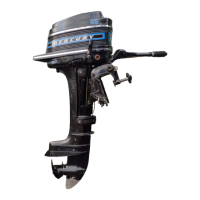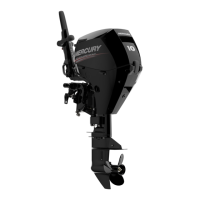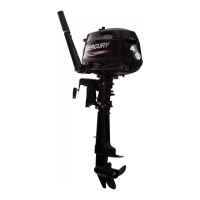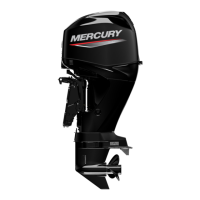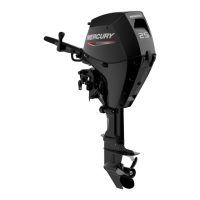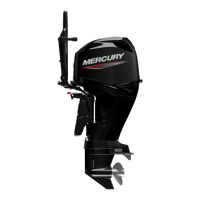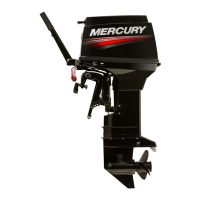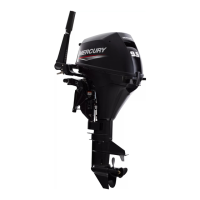GENERAL INFORMATION
90-828631R3 MARCH 1999 Page 1C-5
Following Complete Submersion
Submerged While Running (Special Instructions)
When an engine is submerged while running, the possibility of internal engine damage is
greatly increased. If, after engine is recovered and with spark plugs removed, engine fails
to turn over freely when turning flywheel, the possibility of internal damage (bent connecting
rod and/or bent crankshaft) exists. If this is the case, the powerhead must be disassembled.
Salt Water Submersion (Special Instructions)
Due to the corrosive effect of salt water on internal engine components, complete disassem-
bly is necessary before any attempt is made to start the engine.
Fresh Water Submersion (Special Instructions)
1. Recover engine as quickly as possible.
2. Remove cowling.
3. Flush exterior of outboard with fresh water to remove mud, weeds, etc. DO NOT attempt
to start engine if sand has entered powerhead, as powerhead will be severely damaged.
Disassemble powerhead if necessary to clean components.
4. Remove spark plugs and get as much water as possible out of powerhead. Most water
can be eliminated by placing engine in a horizontal position (with spark plug holes down)
and rotating flywheel.
5. Change engine oil and filter as outlined in Section 1B “Changing Engine Oil”. Run
outboard for short time and check for presence of water in oil. If water present (milky
appearance) drain and refill as previously mentioned.
6. Pour alcohol into carburetor throats (alcohol will absorbed water). Again rotate flywheel.
7. Turn engine over and pour alcohol into spark plug openings and rotate flywheel.
8. Turn engine over (place spark plug openings down) and pour engine oil into throat of
carburetors while rotating flywheel to distribute oil throughout crankcase.
9. Again turn engine over and pour approximately one teaspoon of engine oil into each
spark plug opening. Again rotate flywheel to distribute oil in cylinders.
10. Remove and clean carburetors and fuel pump assembly.
11. Dry all wiring and electrical components using compressed air.
12. Disassemble the engine starter motor and dry the brush contacts, armature and other
corrodible parts.
13. Reinstall spark plugs, carburetors and fuel pump.
14. Attempt to start engine, using a fresh fuel source. If engine starts, it should be run for
at least one hour to eliminate any water in engine.
15. If engine fails to start, determine cause (fuel, electrical or mechanical). Engine should
be run within 2 hours after recovery of outboard from water, or serious internal damage
may occur. If unable to start engine in this period, disassemble engine and clean all
parts. Apply oil as soon as possible.
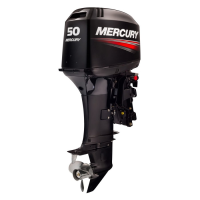
